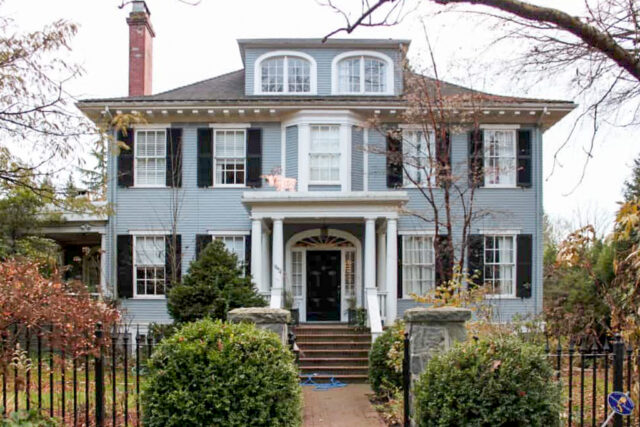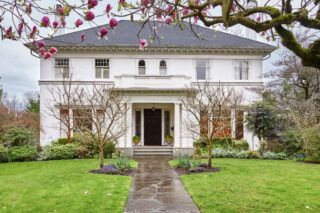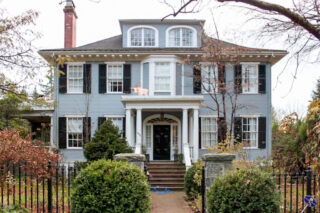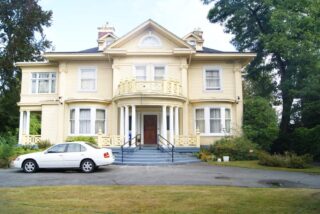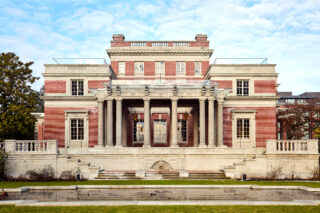Brick only appears in one Shaughnessy Georgian. Wood lap siding or stucco is more common. If stucco, then belt courses, cornices, and corner quoins can be found as embellishments. Doors are six-paneled in a deep high-gloss colour. Chimneys are exposed brick or stucco.
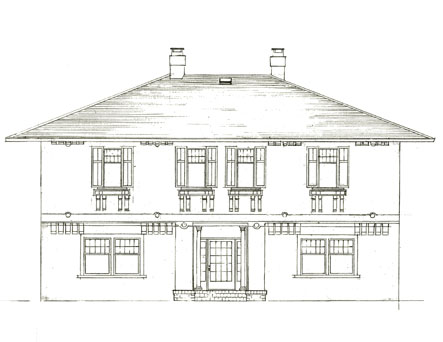
Click on the diagram or expand the term index to learn more about the features.
Belt Course
A horizontal band on the façade of a building, usually indicating the floor level behind it. Also called a belt line or string course.
Bracket
A structural member, often triangular in form, that projects from a wall or other vertical surface to support another component, such as an eave. Some brackets are purely decorative and have no structural or supporting function.
Hipped Roof
A hip (or hipped) roof slopes down to the eaves on all four sides. Although a hip roof has no gable ends, it may have dormers or connecting wings with gables. When the building is square, the hip roof is pointed at the top like a pyramid. When the building is rectangular, the hipped roof forms a ridge at the top.
Operable Shutters
Shutters that are usually mounted on door or window trim so that they close completely over the door or window opening.
Ornamentation
Decorative features used to accent particular components of a building.
Form
An interwar style in Vancouver, Georgian Revivals are symmetrical two-storey houses with hipped roofs (sometimes pierced with dormers), classical detailing and, on some wide lots, projecting single-storey side wings with flat roofs and balustrades. Some have a portico sheltering the front door, often supported by columns with a small balustraded deck above. Windows are often grouped in pairs, are vertically proportioned, have wooden muntin bars and are flanked with shutters. Fanlights are common above the front door. The main floor is typically at grade. In some cases, a belt course between the two floors defines a projecting upper storey, supported by scroll brackets. Some have pilasters and quoins as well as dentils for added classical decoration. Cladding may be stucco or lap siding.
Background
The Georgian Revival style developed from the colonial architecture of the Atlantic seaboard. The name came from the reign of the four King Georges, between 1714 and 1830, when the original style was popular. It re-emerged when the American Centennial in 1876 popularized colonial architecture. The style did not become common in Vancouver until after World War I. Like other Revival styles popular at the time, Georgian Revival architecture brings to mind a tradition of an earlier time. Early Revival houses try to closely imitate the proportions of the original style. Now, the term ‘Georgian’ has often became synonymous with ‘symmetrical.’
Details
- Hipped roof (sometimes side-gabled)
- Symmetrically balanced facade
- Centred door
- Accentuated front door, normally with pediment supported by pilasters
- Often doors have overhead fanlights or sidelights
- Windows with double-hung sashes, usually multi-pane glazing
- Windows often in adjacent pairs
